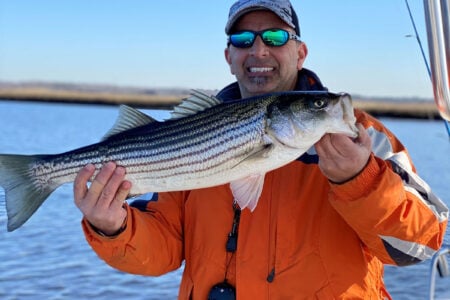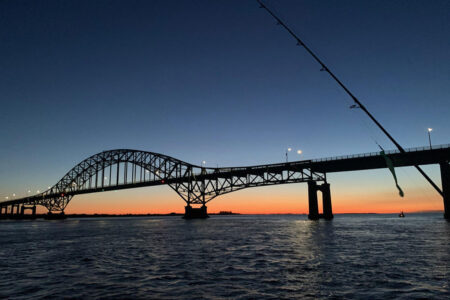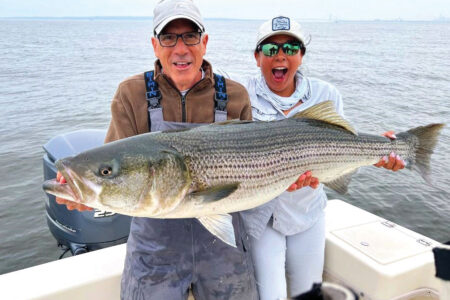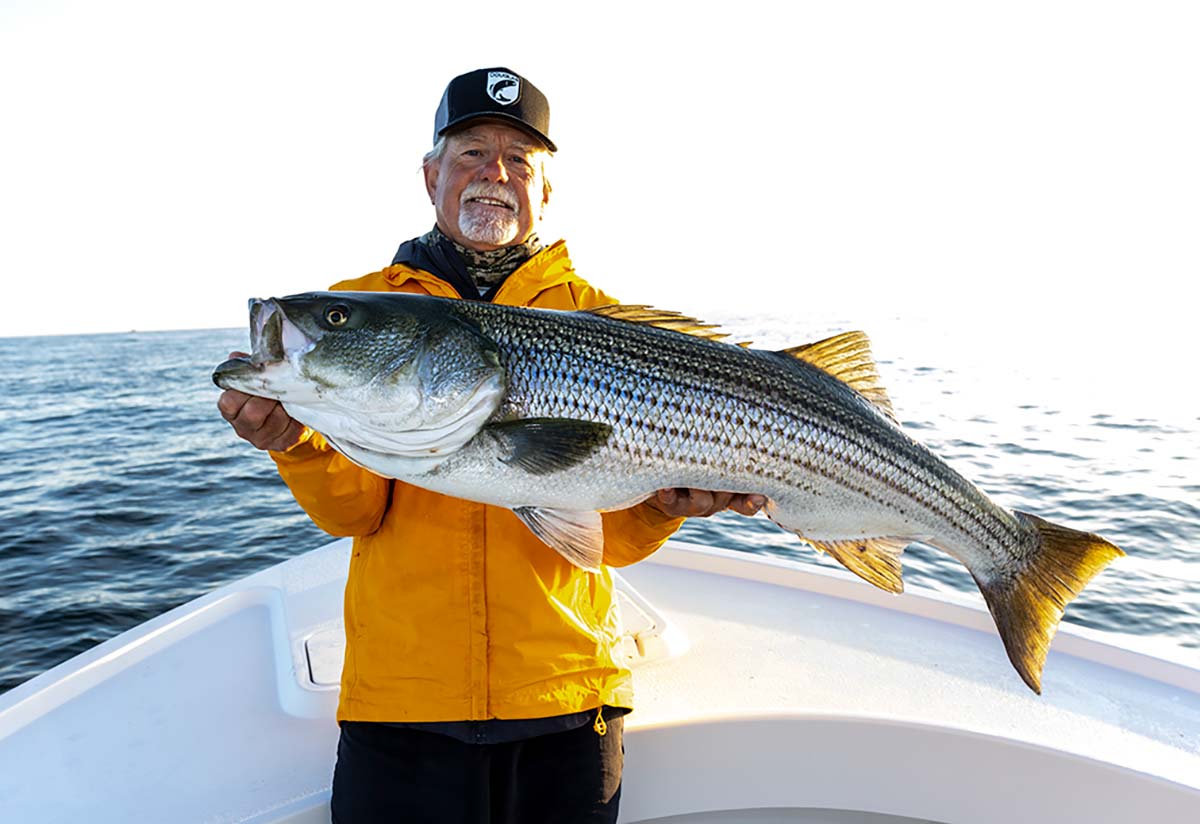
From the end of May to the beginning of July this bait triggers excellent fishing at the end.
Last season, starting in the third week of May, schools of 3 to 4-inch sand eels came into the Montauk rips, and they stayed there till the first few days of July. Hordes of stripers arrived about the same time, stayed as long as the bait was around, and just fed and fed on them. Many were 28 to 35 inches, and some were just under that, but there were also many bass 25 to 30 pounds in the mix. Along with these were good numbers of fish to 35 pounds, and even some 40 to 50-pounders, with some even bigger than that. It really had the makings of a bonanza, and it was.
Not Just First Light
We started out thinking it was only a first light feeding thing, as it often is with sand eels, but as the weeks went by, we realized it was a bite often lasting through the middle of the day and often good in the late afternoon as well. It could be all-day-long fishing.
I always thought you couldn’t get giant bass (or even see them) feeding on 3 or 4-inch long bait and that the “cut off” point for a big bass’s (fish above 25 pounds) interest was a 5-inch individual. Later on in the bite, I witnessed (and was startled to see) various 40 and even 50-pound stripers at times leisurely ingesting those small sand eels right under the surface in clear water during the middle of a cloudless day. Seeing is believing, and those visuals changed that belief!
We started trying to get out at first light because we reasoned that it would be the best time to get big fish. Not knowing at first if the fish were solely on sand eels, but perhaps squid too, or maybe only on the latter, we threw 7-inch and 9-inch Docs as well as 10-inch Fish Snax Super Snax and got bass 25 to 35 pounds with some bigger lost. At this time they would only eat these big lures on the surface for that short early morning period. They would also eat them late in the day. We didn’t realize yet that the bass were on sand eels and were actually in them for hours.
Days later, as we extended our fishing day, we’d see bass swirling, waking, showing fins, greyhounding, and feeding all over the surface, especially if seas were calm and the sky overcast, but this started happening in the sunshine too.
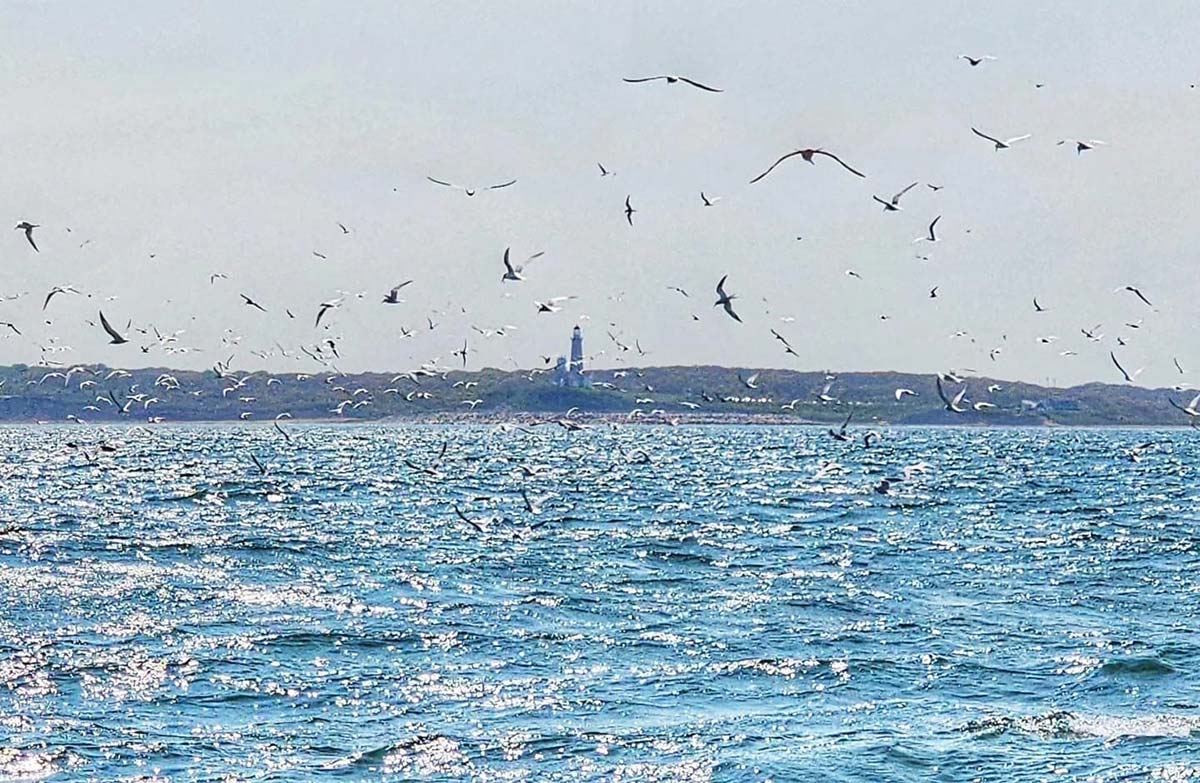
Coming To Realization
At first, we thought these fish were 12 and 15-pounders, but we were finding them hard to get to hit. On one outing, my friend Anthony Loganzo spontaneously says, “I think I’ll try the Albie Snack.” Well, he casts it out over some swirling fish, and boom! He immediately gets a strike. Sinking that hook into that one, it just rips the line off the reel, and a little while later, he has a 25-pounder by the boat. Anthony then decides to take a rest. With that opportunity, I grabbed his rod, made a cast into some waking fish with that 5-inch long white soft plastic, gave it some tantalizing action, and a huge swirl materialized. I set the hook, and once again, the line starts peeling and peeling off the light-spinning reel. Wow, “I guess there are some bigger fish here.” A few minutes later, a 30-pounder is in my hand for release.
There were big fish on the surface here going on into the late morning. I haven’t seen that much this time of year in years past. But this year we did, and it stayed like that for weeks. Our go-to lure in this situation became that white Albie Snax. We’d use a medium-speed twitching retrieve, which made that lure dart enticingly, and it never failed to produce hits for the remaining weeks the sand eels were here and on top.
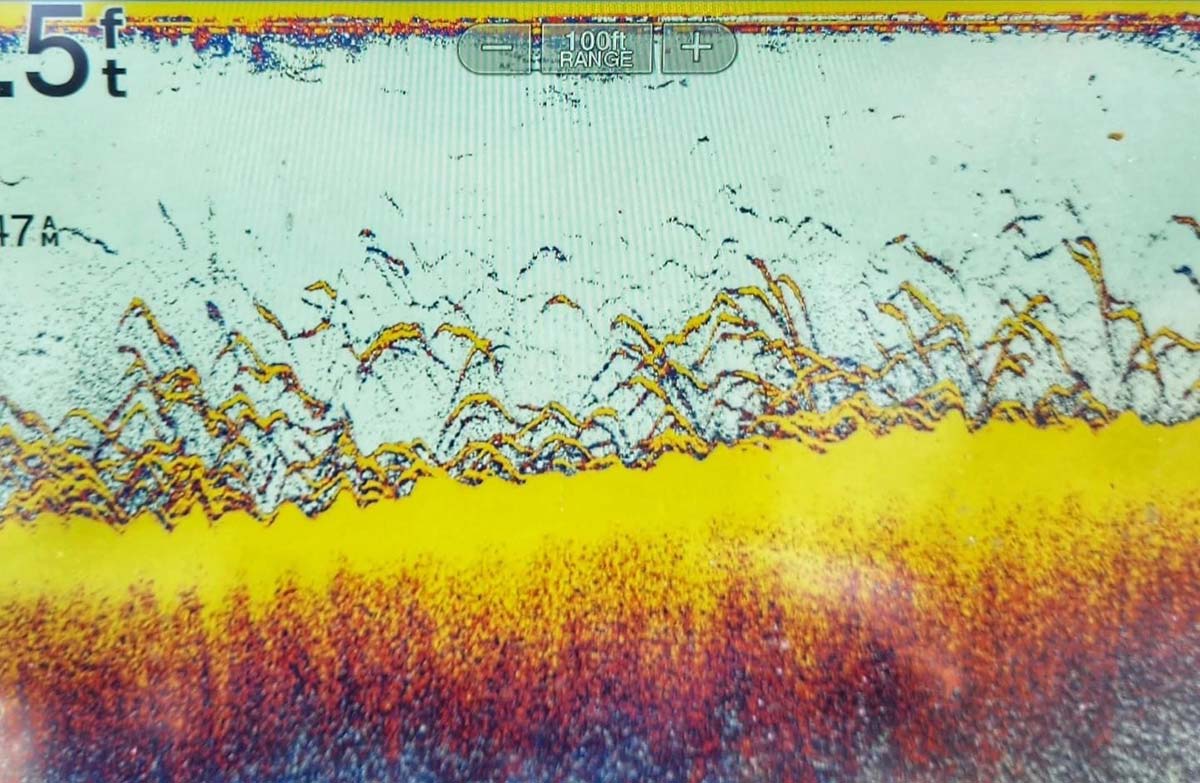
Working The Doc And Super Snax
That early morning we worked the Doc spook with quick jerks of the rod tip broken up with short pauses to let the lure glide to the left and right. It’s good to let that lure slide some each way, as well as to try to make it “spit some water” as it goes too.
Alex Peru, the designer of the Super Snax, throws an unweighted Snax in the morning and gives it lots of side-to-side sliding action with rod tip twitching and pausing. Much like that done with the Doc, but subtler. Alex tries to keep that lure working just under the surface.
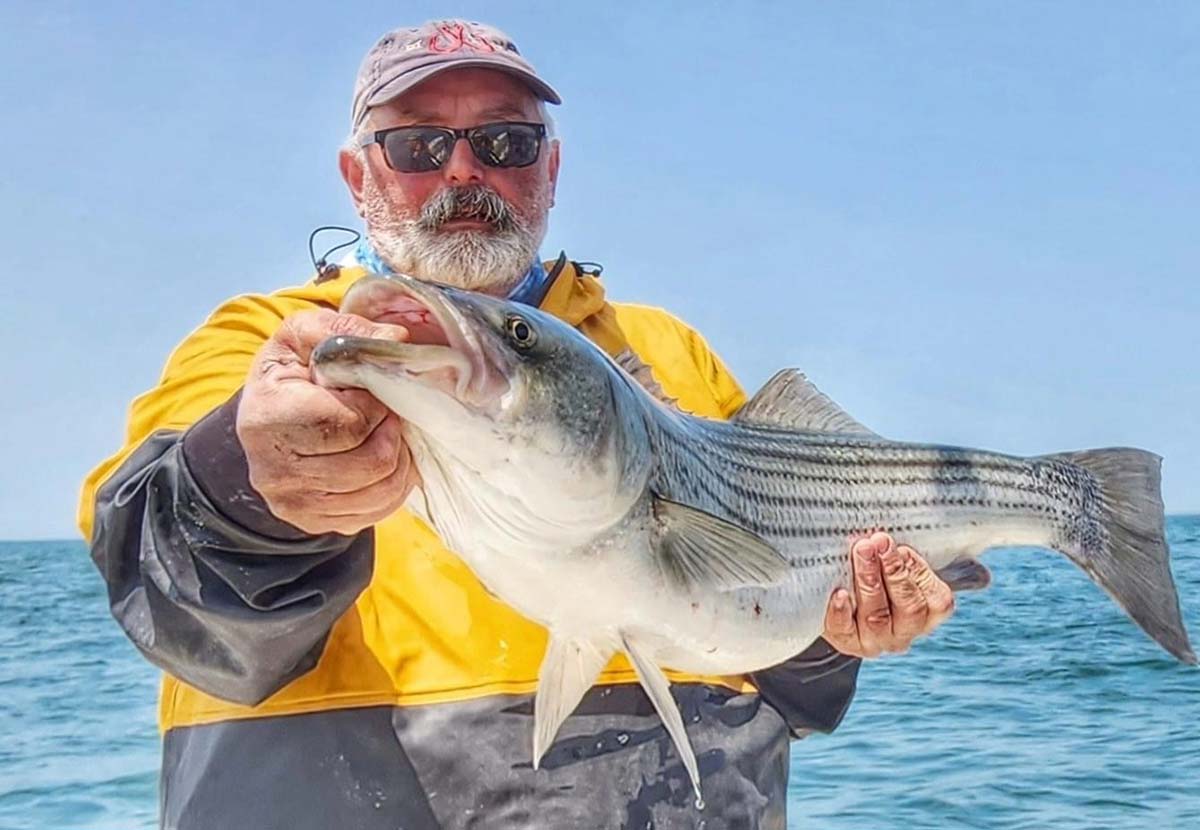
The June Bite
Around the first two weeks of June, schools of squid arrived to join the sand eels. Except for using the Doc, which is a great lure when squid are around, we changed tactics. Now we cast that Super Snax as far as we could and kept retrieving it fast so it could make as much surface commotion as possible. The explosions on it were fearsome. This fishing pattern worked into the middle of the day now too, as long as the water stayed fairly calm or so. With the squid around, many bass still stayed on or near the top.
At times, during that same two-week period, the bass weren’t on top but were concentrated deep. This was when the bucktail with soft plastic curly tail came into its own. A weighted Super Snax did too. I fished the bucktail just over the bottom, snapping it up with that sudden sharp rod tip lift, then letting it fall, all on the drift and around the various rips where the bass were. Oftentimes there were gulls and shearwaters over the water where the bass held. You often spotted bass on the finder too, but not always. On rougher days, stripers were usually suspended some over the same areas where you’d caught them on the surface. The 10-inch white Super Snax on a 1-1/2-ounce bullet head jig worked wonders at depths anywhere from 5 to 15 feet down. All you had to do was give that lure max action at those depths.
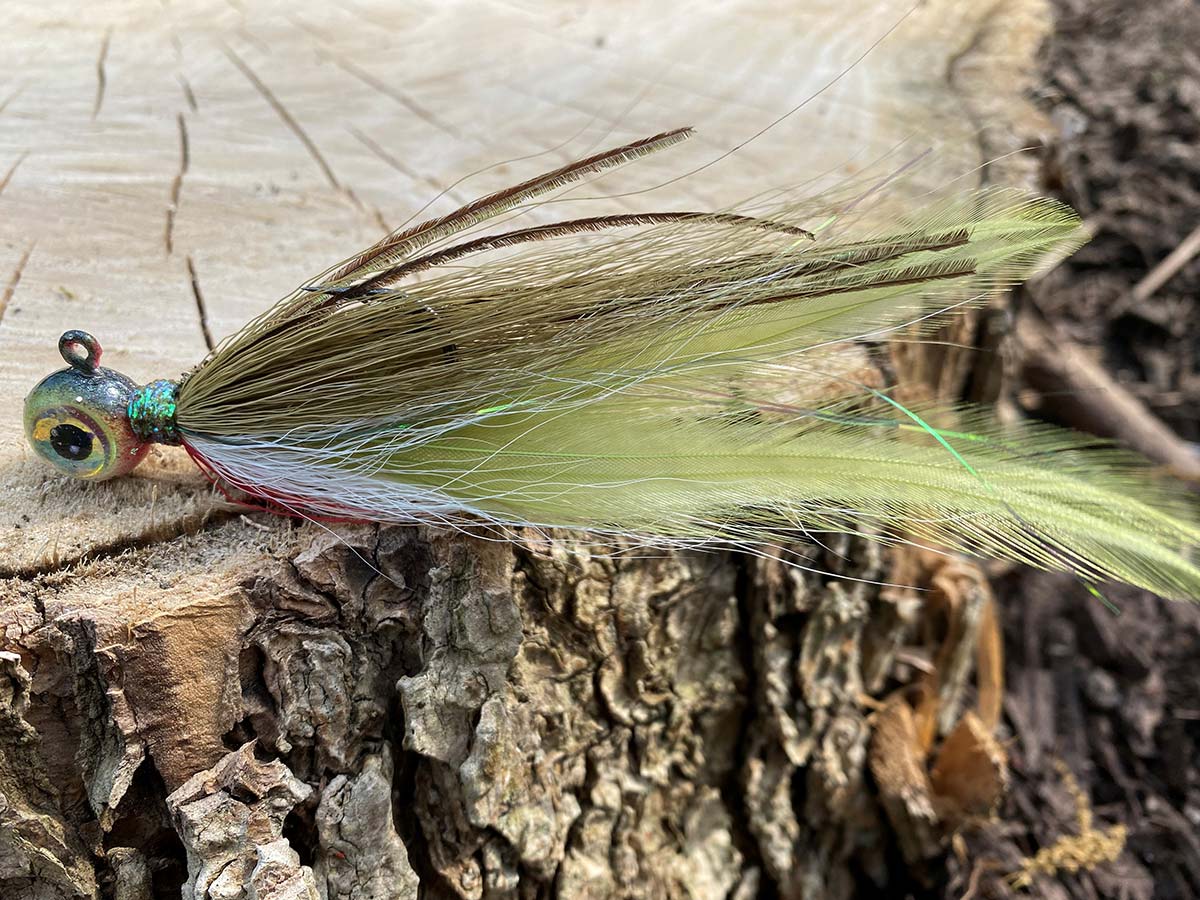
Big Bass Around
There were some really big bass around here during this period. The biggest I saw caught was one bucktailed up by Savio Mizzi, which he said he “couldn’t get in the boat,” although he finally did, and I have to tell you that I’ve seen Savio manhandle 40 and even 50-pounders over the gunwale easily. He estimated the monster at 60 pounds, a true monster.
Later on, as we got into the last half of June, with its many cloudless, windless, sunny sky days, schools of stripers of all sizes were visible in mass right up on and just under the surface, all feeding in the small sand eels. The water was clear and at mid-day, this scenario allowed you to sight cast to fish to 50 pounds; bait and predators both in plain sight. As mentioned earlier, it just amazed me that bass that big were readily eating bait that small. I’d never seen it before. Follow the swirls, and you follow the fish. I wondered if everything had been set up this way from the beginning, and we just hadn’t been able to see or recognize it until now due to previous conditions — time of day we were fishing (early and late), amount of and lack of sun during mid-day, and wind — live and learn.
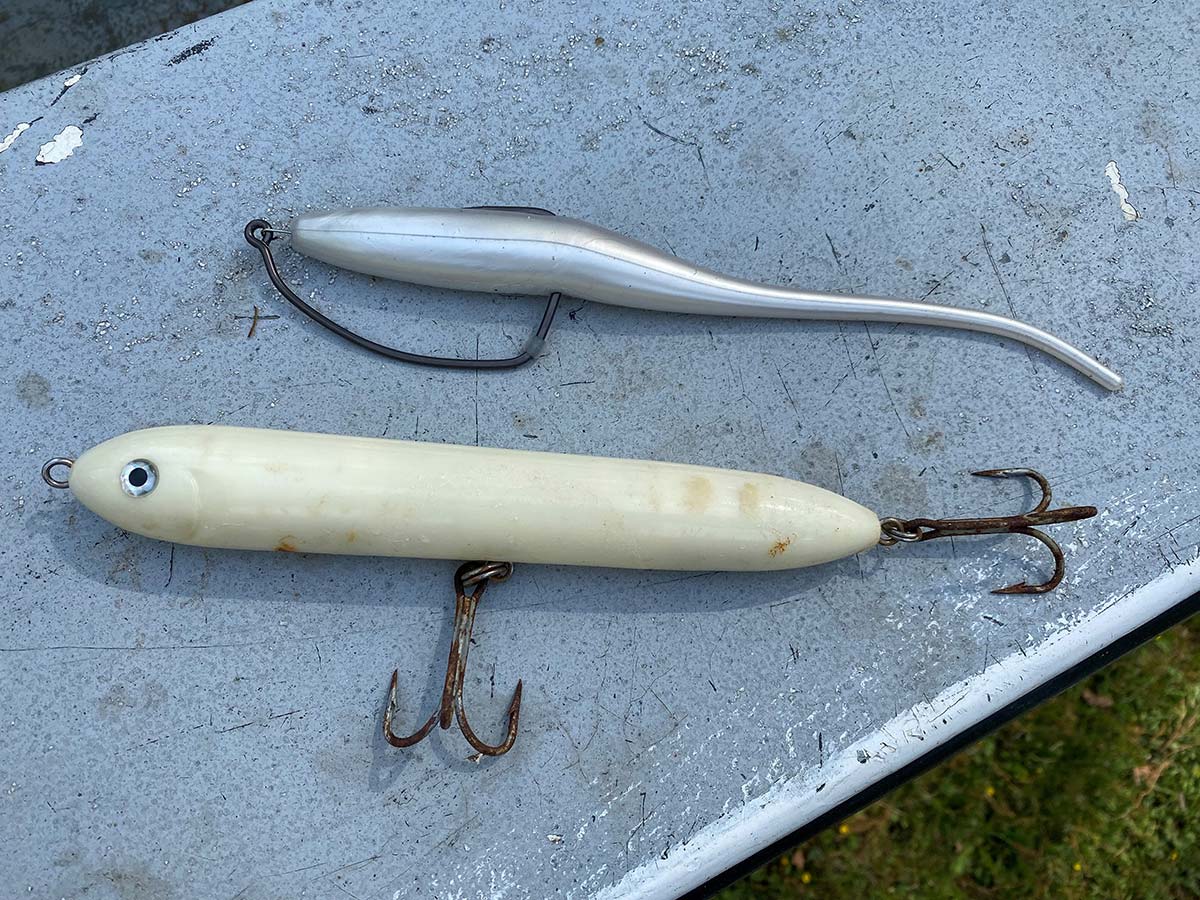
Switching Gears
Even though really big fish could be in plain sight, they weren’t easy to trick. They seemed to turn and dive quickly and at random, making it hard to put a lure or fly right on their nose, which was needed in order to get a strike. You knew you had to get them to get a good look at it because there were just so many naturals competing for the bass’s attention. We got fish on the Albie Snax, as before, to 30 pounds, but these conditions gave us the perfect opportunity to use the fly rod. With a floating or intermediate line, you could put a small sand eel fly in front of the fish. We used Michael Ozkaya tied Flat Wing Sand Eels, 3-1/2-inch thin rabbit strip flies, and Mikkleson Epoxy Sand Eels and took a number of bass to 25 pounds. Vinnie DePalma got the biggest one on the boat. Around this time, Paul Dixon boated a 51-inch striper on a fly, which was the biggest fly-caught bass I’d heard of caught during this “sand eel” phenomenon.
Come the beginning of July, the action slowed, the sand eels disappeared, and the wonderful surface-to-bottom sand eel bass action finally came to a close. It was memorable, often visual fishing, and we were grateful for having it. Hopefully, it returns this season!
